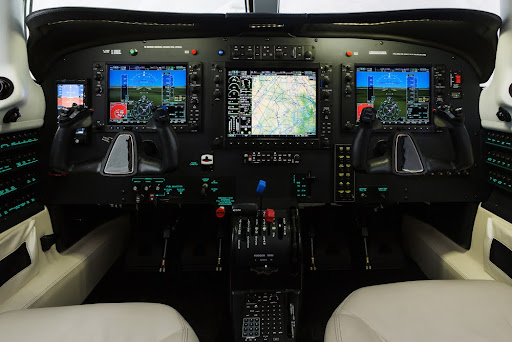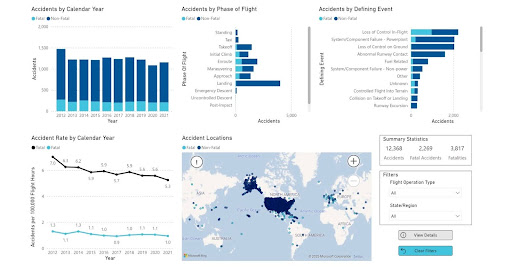The United States recorded over 25 million aviation flight hours in 2023—more than 200,000 of which belonged to private and commercial aircraft. Meanwhile, general aviation accounted for nearly 50% of all European civil aviation movements, which are critical in regional transport, business travel, and tourism.
Yet, many still regard flying as expensive and time-consuming—long security lines, flight delays, and crowded airports. One will wonder, will flying ever be as flexible as driving a car?
Here’s where two-to-four-seater aircraft come into place—these small but powerful planes offer faster, safer, and more affordable options for people, even for everyday commuters. Thanks to recent developments in aviation technology, these planes are reshaping the status quo on air transport, opening opportunities that once only the rich can benefit from.
So, would you rather spend five hours stuck in traffic while going to the airport or fly one hour directly to your destination?
I’m Sanket Karve, an aerospace engineer and aviation expert, and I’m here to discuss how two-to-four-seater planes make everyday air travel practical and safe.
The aviation industry traditionally used two- to four-seater planes for flight training, personal travel, and air taxi services. However, their role changed as time passed—they now help people bypass congested airports, reach remote destinations, and travel on flexible schedules at competitive costs.
In fact, general aviation makes up a significant portion of total air traffic in the US and Europe, with the US holding over 211,000 general aviation aircraft in hangars spread throughout the country.
That number is still increasing, with thousands of new small aircraft manufactured yearly.
Whether it’s the US or Europe, it’s evident that more and more people are using these planes for personal, business and tourism
—and it’ll continue in the next few years.
But the bigger question is, are these planes affordable?
The common thought process has been that these planes are luxury—only the wealthy, like billionaires and celebrities, use small aircraft for their travels.
However, that’s not the reality. With these planes’ constantly decreasing costs, two- to four-seater planes became a viable alternative to airline tickets, especially for short-haul travel.
Let’s look at the figures and compare:
Cost of Commercial Airlines
- Domestic US Average Airfare (2023 – 2024): $273 – $381 per one-way ticket
- International Flights (Economy Class): $500 – $1,500 per ticket
- Business or First Class: $1,000 – $5,000+
Cost of Renting or Chartering Small Aircraft
- Personal Flying:
🛩️ Cessna 172 (4-seater): $150 – $250 per hour
🛩️ Cirrus SR20 (4-seater): $200 – $400 per hour
🛩️ Piper Cherokee (4-seater): $129 – $220 per hour
- Air Taxi/Charter Services (One-Hour Flight, Entire Plane)
🛩️ Private Hire: $500 – $1,500 per hour
🛩️ Shared Cost per Seat: $125 – $400 per person, four people
splitting equally
Looking at these costs, are flyers saving by choosing these small aircraft? Assessing these numbers, we can deduce that cost savings will depend on the number flying in the airplane:
- Solo travelers will generally save money using commercial airlines.
- Travelers in groups of 2 – 4 will find these small aircraft just as affordable, if not cheaper, for short-haul flights.
- Last-minute travelers will find air taxis to eliminate layovers and provide direct routes, reducing their overall travel expenses.
- Travelers flying to remote areas will see small aircraft as more viable because many small towns lack commercial airports.
Another angle where two- to four-seater airplanes provide benefits to flyers is time. Unlike commercial airlines, these small planes allow passengers to fly directly to their destination, eliminating long check-in lines, security delays, or unnecessary layovers.
One of the many passenger frustrations in flying involves the time spent at airports. According to a report by the US Department of Transportation, passengers typically wait 20 to 40 minutes for a security check on average, and this time can extend to over an hour during peak travel times. Factor in check-in, baggage drop, and boarding, and passengers will spend two to three hours at the airport before their flight departs.

Source: Bureau of Transportation Statistics
On the other hand, small aircraft virtually eliminate this time. Many two- to four-seater planes operate out of smaller, regional airports or private terminals, allowing passengers to arrive, board, and take off within 15 to 30 minutes—no TSA lines, baggage claim delays, or waiting at the gate.
Furthermore, small aircraft eliminate flight delays and overbooking—a common issue in commercial air travel. Since these planes operate on-demand, pilots and passengers control the flight schedule, ensuring on-time departures and reliable travel timelines.
Let’s look at the typical timeline for passengers flying commercial flights and small plane flights:
| Route | Commercial Airline Time (Including Layovers and Check-in) | Small Aircraft Time |
| New York to Boston | 3.5 hours (1 hour flight + security + boarding) | 1.5 hours (direct) |
| London to Paris | 4 hours (including airport wait times) | 2 hours (direct) |
| San Francisco to Lake Tahoe | 5 hours (including drive from Reno) | 1 hour (direct) |
Small planes provide an undeniable advantage for passengers who value flexibility and efficiency.
However, are two- to four-seater planes as safe as they are flexible and affordable?
For decades, many considered small aircraft as less safe than commercial airlines, mainly because of older technology, limited regulatory oversight, and higher accident rates in the past years. However, this is not the case anymore—improvements in tech, regulations, and pilot training significantly increased the safety of these aircraft, making them viable and reliable for passenger transportation.
Before, small planes relied on analog instruments for operations. As technology advanced, so did the avionics that made these small planes fly. Some of these upgrades include:

- Glass Cockpits (Garmin G1000, Dynon SkyView, Avidyne Entegra): These high-resolution digital displays replace outdated analog dials and provide pilots with real-time navigation, traffic alerts, weather updates, and engine performance data.
- Synthetic Vision Syndrome (SVS) – This technology allows pilots to see the terrain even in poor visibility, reducing the risk of controlled flight into terrain (CFIT) accidents.
- Traffic Collision Avoidance Systems (TCAS) – This system alerts pilots of potential mid-air conflicts with nearby aircraft to help prevent collisions.
- Automated Weather Data Integration – This automated system directly provides real-time weather maps, storm predictions, and turbulence warnings—previously only available on commercial airlines.
Adopting these advanced avionics has helped reduce pilot error-related accidents in aircraft by 47% since 2012.

Source: National Transportation Safety Board
But what if engine failure or loss of control happens during mid-flight? How can pilots ensure safety when such a thing arises?
In these situations, modern two- to four-seater planes have Whole Aircraft Parachute Systems to guarantee the safety of the pilot and the passengers.
These systems work once the aircraft loses power, enters a spon, or experiences structural failure—allowing pilots to deploy a parachute that lowers the entire plane safely to the ground.
Furthermore, the engines in small aircraft have seen a significant upgrade compared to older models, which are more prone to mechanical failures due to wear and tear over time. New engine technologies such as the FADEC enhanced its engine’s reliability and efficiency, decreasing engine failure-related accidents by 35% over the last 20 years.
As technology advanced in small aircraft, regulations surrounding their use have become stricter. Regulatory bodies such as the Federal Aviation Administration (FAA) and the European Union Aviation Safety Agency (EASA) have introduced new regulations that help make these small planes safer.
For example, regulations require pilots to undergo more frequent simulator training, including emergency handling, stall recovery, and inclement weather navigation, to ensure passenger safety.
Additionally, small aircraft must be equipped with Automatic Dependent Surveillance-Broadcast (ADS-B) technology, a satellite-based tech enabling aircraft to automatically transmit their real-time location, altitude, speed, and direction to air traffic controllers and aircraft. Such technology prevents mid-air collisions and enhances air traffic awareness.
Another example of stricter small aircraft regulation involves maintenance and upkeep. New FAA and EASA standards require frequent engine, airframe, and avionics inspections to catch potential issues before they become dangerous.
Thanks to stronger regulations and increased pilot training standards, general aviation can reduce incidents of accidents and engine malfunctions, guaranteeing the safety of everyone on board.
Working in the aviation industry, I’ve seen all these developments unfold and contributed to them happening. Through working closely with pilots, engineers, and aviation regulatory bodies, I understood how emerging technologies redefine what it means to fly in a small aircraft—not for the sake of training pilots but for the use of the general public.
As an aviation engineer, I’m focused on enhancing general aviation operations’ efficiency and safety—leveraging advanced avionics, automation, and improved regulations to ensure no plane fails mid-flight and no passenger or pilot gets harmed. Seeing these innovations firsthand only reinforces the idea that general aviation is entering a new era where small aircraft are practical and essential for modern travel.
With these innovations, general aviation is becoming more accessible to the general public, destroying the notion that only those with money can obtain its services. And as aviation technology continues to evolve, we’ll see safer and more efficient improvements to these planes, matching those of commercial airlines and redefining modern travel as we know it.
About the Author
Sanket Karve is an aviation expert with extensive experience in aircraft technology, general aviation safety, and aircraft maintenance. He has worked closely in aircraft maintenance facilities and holds an active FAA Airframe and Powerplant certificate. By working closely with pilots, engineers, and regulatory agencies, Sanket has analyzed emerging trends in general aviation, including air taxi services and two- to four-seater aircraft in modern transportation. With his work and research, he advocates for safer, more efficient, and more accessible air travel solutions for private and business aviation.
Sources:
BRS Aerospace. (2024). Survivor stories: How aircraft parachutes saved 450+ lives. https://www.brsaerospace.com/saved-by-brs
Bureau of Transportation Statistics (BTS). (n.d.). OmniStats: Table 4 – General aviation safety data. https://www.bts.gov/archive/publications/omnistats/volume_04_issue_01/table_04
European Union Aviation Safety Agency (EASA). (2024). General aviation in Europe. https://www.easa.europa.eu/domains/general-aviation/
Federal Aviation Administration (FAA). (2024). Autoland safety cases and accident prevention programs. https://www.faa.gov/autoland-safety-cases
Federal Aviation Administration (FAA). (2024). U.S. airport and general aviation statistics. Available at: https://www.faa.gov
General Aviation News. (2024). How modern engines are reducing accident rates in small planes. https://generalaviationnews.com
LendingTree. (2023). Domestic airfare study. https://www.lendingtree.com
National Transportation Safety Board (NTSB). (n.d.). General aviation dashboard: Safety data and trends. https://www.ntsb.gov/safety/data/Pages/GeneralAviationDashboard.aspx
Plane & Pilot Magazine. (2023). Affordable aviation grows with new aircraft models. https://www.planeandpilotmag.com/aircraft/brands/elixir/affordable-aviation-grows-with-new-aircraft
Reuters. (2024). Record 80 million Americans expected to travel for Thanksgiving holiday, industry group says. https://www.reuters.com/world/us/record-80-million-americans-expected-travel-thanksgiving-holiday-industry-group-2024-11-18/
U.S. Department of Transportation. (2023). Airport wait time study. https://www.transportation.gov
